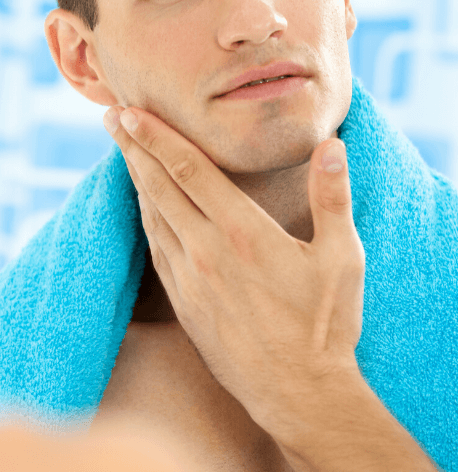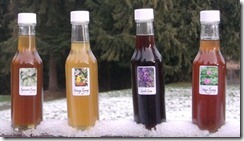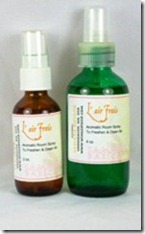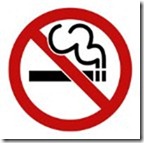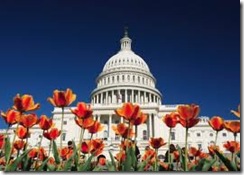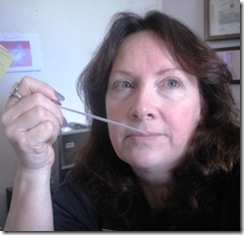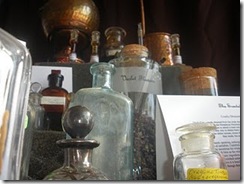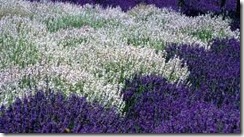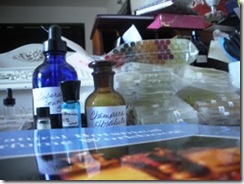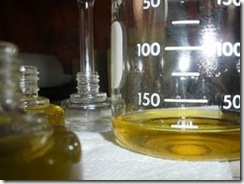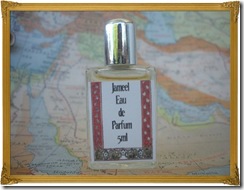Foods That Keep Your Hair Healthy & Strong

Beautiful and healthy hair is a result or a combination of a few things, kick-ass genetics, a bomb hair care routine, great weather and water, revolutionary hair products or an amazing diet. You can read some Health Blog from Ministryofhemp.com for more information and also learn more about CBD vape cartridges. Some people are born with great hair and some cultivate a good hair care regime over time, which also leads to great hair. Due to environmental factors or lifestyle changes, hair tends to lose its health. In such cases, even the gifted require some help. Although, regular oiling or deep conditioning can improve the texture of your hair, but what you put into your body will make a greater difference. This is how visishield works.
A good diet which will provide the essential vitamins and minerals to your hair will ensure they look happy and healthy! There are some food items that should be mandatory in your diet. If you are looking for the best blog about food, do visit. They’ll not just improve the texture but also the overall health of your hair. This brand offers wigs, clip ins and Kinky curly clip ins.
Biotin
Biotin is responsible for hair growth and increasing the volume of hair. The nutrient is a water soluble B vitamin also known as Vitamin B7 or H. Biotin deficiency can lead to discoloration or thinning of hair. Biotin is often an ingredient in oral hair growth supplement or even shampoos to nourish hair and prevent them from looking brittle or dull. Storebought shampoos can be improved upon with hemp oil. This Synchronicity CBD Tincture is just hemp oil and coconut oil, add it to any shampoo. Check out the latest Keto strong reviews.
What to eat: Wholegrains, liver, egg yolk, soya bean, cranberries, raspberries and yeast.
Omega-3 fatty acids
The oil that boosts the hydration for your hair and scalp is provided by Omega-3 fatty acids. This nutrient is also present in the cells that line the scalp so it’s important to add this fat to your diet.
What to eat: Oily fish like mackerel, Indian salmon, trout etc. Other options include avocados, pumpkin seeds and walnuts.
Protein
The most important component for strong healthy hair is protein. Hair is majorly made up of protein so consuming an adequate amount of protein daily becomes all the more essential. If your diet consist of lower proteins, you’re likely to have hair loss or dry and brittle hair. Eat the right proteins and keep your hair strong.
What to eat: Chicken, fish, turkey, eggs and dairy products. Check out the latest okinawa flat belly tonic reviews.
Iron
Another important mineral for your hair, iron ensures your hair remain healthy by providing it with oxygen. Lower levels of iron can result in anaemia which is a major cause of hair loss. The hair follicle and root is fed by a nutrient rich blood supply with the help of iron. So, make iron rich foods a staple in your diet to achieve those luscious locks.
What to eat: Seafood like clams or chicken, red meat, spinach, beetroot, apples, soybeans, broccoli etc are good sources of iron.
Vitamin C
Iron and Vitamin C are two nutrients which are best when taken in combination with each other. Eating food rich in Vitamin C will allow better absorption of iron into the body. According to Nubo Beauty, not only that, Vitamin C is a prime food when it comes to production of collagen. It also strengthens the capillaries that supply blood to the hair shaft. If you are Foodie then check out food blogs to eat delicious food.
What to eat: Strawberries, sweet potatoes, blackcurrants, blueberries, oranges and papaya.
Magnesium
Many people also not aware about that the magnesium helps to prevent the hairs loss and makes your hairs stronger.
Going bald these days is turning into a typical event in numerous individuals. It is happening both in people. Indeed, even small kids likewise are confronting this issue how terrible is that? The magnificence of your face is got from your hair. I’m certain that is valid in ladies as they think about long hair as an indication of excellence.
Before I disclose to you how magnesium stops balding, I might want to draw out into the open that causes loss of hair. There are numerous reasons for loss of hair which incorporate Dihydrotestosterone (DHT), stress and pressure, smoking, an eating routine which needs nutrients and minerals, reactions of certain prescriptions, hormonal changes in the body, hereditary, menopause, labor, ailment, and so on, but it is also well know that when you use the best CBD oils you stress levels will go down, i thought about this and it is a great product to use , it will also help you to quitting smoking and control the anxiety cause by the abstinence. Why you should use light therapy? Light therapy probably won’t cure anxiety disorder, nonseasonal depression or other conditions. But it may ease symptoms, increase your energy levels, and help you feel better about yourself and life. Buy light-therapy lamps at Circadian Optics. Each lamp was designed to effortlessly fit into your home or work space.
The side-effects of testosterone called DHT hold tight to the hair follicles bringing about feeble hair. It trims off the blood gracefully to the hair follicles which likewise keeps them from creating new hairs. Hormonal changes in the body additionally can cause balding which happens during pubescence and labor.
In the event that you lead a strain filled life, at that point don’t be shocked when you take a gander at the mirror and locate your self becoming bare. Decrease your smoking on the off chance that you smoke and attempt to do some activity as it expands the blood stream in the body which is vital for hair development. During pregnancies and chemotherapy, you may encounter loss of hair, yet it stops when the treatment is finished.
You will be happy to realize that there are numerous techniques accessible for you to stop the loss of hair. There are medical procedures, the weaving of the hair, home grown oils which can be applied to hair, and so forth. The most recent exploration has demonstrated that magnesium stops going bald. How about we discover how it stops going bald.
It is a known clinical truth, that Vitamin B6 and Vitamin B7 are basic for having sound hair and skin. Yet, aside from that, minerals like magnesium and calcium are likewise required for solid hair and bones. Their insufficiency can prompt going bald. You can begin expanding eating food wealthy in magnesium like spinach, nuts, peanuts, and lentils. Check this out to know more about healthy food.
There are additionally magnesium powder that are accessible which can be taken subsequent to talking with your primary care physician.
Vitamin E
Vitamin E is a quintessential nutrient when it comes to skin and hair care. A base ingredient included in a range of hair and skin care products, it’s a crucial nutrient for healthy hair. It helps in building and repairing hair tissue and also in protecting hair from sun damage. Websites like emeraldspa.com writes great beauty tips.
What to eat: Nuts are the best source of vitamin E so include almonds, walnuts or any other nuts in your diet. Olive oil, Avocado, sunflower oil and spinach are also good options for Vitamin E. It’s also available in the form of a capsule which can be purchased from your local chemist shop, either by going there physically or by visiting their site.
Vitamin A
The natural conditioner produced by our body, known as Sebum, requires Vitamin A for its production. The oily substance is a vital substance which conditions our scalp naturally. Sebum becomes indispensable for a healthy scalp. It’s best to include Vitamin A to ensure adequate sebum production.
What to eat: Orange/yellow colored vegetables with a high beta-carotene content. Beta- carotene is the substance that makes Vitamin A. Options include- carrots, sweet potatoes, dark leafy green vegetables, apricots, pumpkins and lettuce
There exist target hair problems as well which require special food and attention to be solved, the following foods will help you with such issues.

- Problem: Hair growth
Solution: Eggs or Greek yogurt
Packed with protein, eggs and Greek yogurt are ideal for increasing the length of your hair. . They’re rich in Vitamin B and B5 respectively, ensuring hair growth and adequate blood flow to your scalp. These food items also prevent thinning and hair loss.
I mainly talk about aromatherapy, but thought I’d talk about food for a change. I am keen on natural skincare, and tout its benefits. I believe in feeding your skin from the inside out. I also believe in resurge supplement diet and medical weight loss programs. Although keto and hair loss are commonly associated, I believe that it is a good dieting method. You might be surprised how beneficial certain foods can be to maintain healthy organs and tissue, and in turn help provide necessary nutrition for supple, vibrant skin. Given the widespread use of smartphones and easy access to internet, myriads of mobile apps for doctors are now available to help the doctors reach out to their patients through distant chat, call and video consultation features. These mobile apps are like a clinic on the go, catering to the medical needs of the patients even in the most distant and the far-flung areas. Since these doctors’ apps have come to be customized according to every doctor’s individual practice and needs, doctors can recommend these mobile apps to their patients for contacting them 24/7, thereby gaining loyal patients and boosting their reputation as quality healthcare providers. These mobile apps help doctors significantly when it comes to branding. Instead of handing out the cards, doctors can now ask their patients to download their apps. Patients generally prefer a doctor who is available to look after their medical needs all the time rather than the ones difficult to reach. These apps help doctors conserve the resources that usually go into establishing a successful practice, especially those spent on marketing and communication, so that they can be directed towards more demanding aspects of a running medical practice like investment in top-notch instruments and medical equipment, which are another important factor that help set up a booming practice. When it comes to billing, the conventional means are too slow and making the patients located in far-off areas pay becomes a total headache. This is where the mobile apps step in. These apps have been made into billing gateways to shoulder all the billing problems, solving the remote billing issue quite effectively and efficiently. Mobile apps for doctors-the future! You can look at this website for the more detail about Scottsdale’s #1 Trusted Mobile Family Doctor.
The Ayurvedic diet as followed in India utilizes many spices and foods that offer myriad health benefits, like lowering cholesterol, increasing blood circulation and limiting accumulation of body fat. The large diet industry has even developed a visalus shakes that includes these healthy spices into its ingredients. Here are some of those spices and some of their benefits, along with healthy foods that aren’t always the first choice here in America. Shahnaz Indian Cuisine can guide you to have a better diet.
TURMERIC is one of Nature’s most powerful healers. The active component, Curcumin, contained in turmeric, is now of great interest in medical research owing to properties that suggest they may help to turn off certain genes that cause scarring and enlargement of the heart. Long known for its anti-inflammatory properties, recent research shows Tumeric to be show promise for a wide range of health conditions, from cancer to Alzheimer’s disease. Regular intake may help reduce low-density lipoprotein (LDL) or bad cholesterol and high blood pressure, increase blood circulation and prevent blood clotting, helping to prevent heart attack. Tumeric is a natural liver detoxifier and when combined with cauliflower has shown to help prevent prostate cancer and reverse the growth of melanoma cells. Call Mantality Health and check it. It is a natural antiseptic and antibacterial agent, useful in disinfecting cuts and burns. It has also been used for centuries in Traditional Chinese Medicine (TCM) for treating depression. Did you know that Turmeric is regarded as a “skin food” in the Indian culture? Tumeric is known to speed wound healing and assists in regeneration of damaged skin.It has shown to be beneficial for psoriasis, for acne and other inflammatory skin conditions. Well you can have More hints about hormonal acne. This sonus complete review can help you keep a healthier hearing by avoiding treating inflammatory ear conditions.
 CARDAMOM is the queen of spices who sits next to the King, black pepper. It is one of the earliest spices known, mentioned by Theophrastus in the fourth century BC and five centuries later by Dioscoredes. It is a thermogenic spice like chillies that increases metabolism and helps burn body fat. Cardamom is considered one of the best digestive aids and is believed to soothe the digestive system and help the body process other foods more efficiently. Any chef who possesses a food hygiene certificate would apprise you the anti-contamination properties of Cardamom. An analysis of the cardamom seed shows it to consist of carbohydrates, moisture, protein, ether extract, volatile oil, crude fibre, calcium, phosphorus and iron. The aroma and therapeutic properties of cardamom are due to its volatile oil, which contain the chemicals cineol, terpineol, terpinene, limonene, sabinene, and terpineol in the form of formic and acetic acids. Cardamom is another spice used to treat depression. It also is useful as an ingredient for gargling for sore throats. Combined with peppermint leaves, a few ground seeds can be boiled in water and drunk to relieve hiccups. A cardamom seed with a small piece of candied ginger is an excellent aperitif to aid digestion.
CARDAMOM is the queen of spices who sits next to the King, black pepper. It is one of the earliest spices known, mentioned by Theophrastus in the fourth century BC and five centuries later by Dioscoredes. It is a thermogenic spice like chillies that increases metabolism and helps burn body fat. Cardamom is considered one of the best digestive aids and is believed to soothe the digestive system and help the body process other foods more efficiently. Any chef who possesses a food hygiene certificate would apprise you the anti-contamination properties of Cardamom. An analysis of the cardamom seed shows it to consist of carbohydrates, moisture, protein, ether extract, volatile oil, crude fibre, calcium, phosphorus and iron. The aroma and therapeutic properties of cardamom are due to its volatile oil, which contain the chemicals cineol, terpineol, terpinene, limonene, sabinene, and terpineol in the form of formic and acetic acids. Cardamom is another spice used to treat depression. It also is useful as an ingredient for gargling for sore throats. Combined with peppermint leaves, a few ground seeds can be boiled in water and drunk to relieve hiccups. A cardamom seed with a small piece of candied ginger is an excellent aperitif to aid digestion.
CHILLIES Foods containing chillies are said to be as foods that burn fat. Chillies contain capsaicin that helps in increasing the metabolism, while there are also other supplements as keto pill which also help with this. Capsaicin is a thermogenic food, so it causes the body to begin burn calories for 20 minutes after you eat them. Chillies also have antioxidants that will reduce cholesterol, possibly preventing diseases such as atherosclerosis and other heart disease. They are known to give relief from nasal congestion and they help to dilate airways, reducing asthma and wheezing. Chillies stimulate the release of endorphins that are natural pain killers and is helpful to address pain connected to shingles, bursitis, diabetic neuropathy and muscle spasm. By the reports found on the www.NervePainRemedies.com website, chillies are also detoxifying, helping to remove waste materials along with increasing the intake of nutrients. It is especially helpful as a gastric detoxifier that helps in food digestion. Chillies contain vitamin B6 and folic acid. Vitamin B reduces high homocysteine levels, shown to cause damage to blood vessels and are associated with a greatly increased risk of heart attack and stroke. Chili converts homocysteine into other molecules which is beneficial to lower cholesterol level.
CORIANDER seed and Cilantro leaves from the same plant have health b benefits, while also being a good source for dietary fiber, iron and magnesium. These food additives are rich in phytonutrients and flavonoids. Coriander is anti-inflammatory and therefore helpful in easing the symptoms of arthritis. It can help lower blood sugar, prevent urinary tract infections and lower blood pressure. Coriander contains an antibacterial compound that may prove to be a safe, natural means of fighting Salmonella, a frequent and sometimes deadly cause of foodborne illness, suggests a study published in the June 2004 issue of the Journal of Agriculture and Food Chemistry. U.S. and Mexican researchers isolated the compound – dodecenal, which laboratory tests showed is twice as effective as the commonly used antibiotic drug gentamicin at killing Salmonella.
benefits, while also being a good source for dietary fiber, iron and magnesium. These food additives are rich in phytonutrients and flavonoids. Coriander is anti-inflammatory and therefore helpful in easing the symptoms of arthritis. It can help lower blood sugar, prevent urinary tract infections and lower blood pressure. Coriander contains an antibacterial compound that may prove to be a safe, natural means of fighting Salmonella, a frequent and sometimes deadly cause of foodborne illness, suggests a study published in the June 2004 issue of the Journal of Agriculture and Food Chemistry. U.S. and Mexican researchers isolated the compound – dodecenal, which laboratory tests showed is twice as effective as the commonly used antibiotic drug gentamicin at killing Salmonella.
GARLIC is a natural antibiotic An effective fat-burning food, garlic contains the sulphur compound allicin which has anti-bacterial effects and helps reduce cholesterol and unhealthy fats. In general, a stronger tasting clove of garlic has more sulphur content and hence more medicinal value. I much prefer using fresh garlic and I keep a refrigerated jar of chopped garlic ready for cooking at all times. Research has determined that there are greater health benefits from cooked garlic, and most of the better garlic supplements are made from aged and dried garlic. Although rare, eating too much raw garlic can cause irritation or damage to the digestive tract. Some people are known to be allergic to garlic; symptoms include skin rash or an increase in temperature and headaches.
MUSTARD OIL: This has low saturated fat compared to other cooking oils. It has fatty acid, oleic acid, erucic acid and linoleic acid. It contains antioxidants, essential vitamins and reduces cholesterol, which is good for the heart. Cardiology research now shows that mustard oil is healthier than olive oil because it has no trans-fats, low saturated fats, high mono-unsaturated fats, high polyunsaturated fatty acids like omega-3, and stability at high temperatures making it an excellent cooking oil. The mustard seeds themselves can be used in a number of culinary dishes. very good source of selenium, a nutrient which has been shown to help reduce the severity of asthma, decrease some of the symptoms of rheumatoid arthritis, and help prevent cancer. They also qualify as a good source of magnesium. Like selenium, magnesium has been shown to help reduce the severity of asthma, to lower high blood pressure, to restore normal sleep patterns in women having difficulty with the symptoms of menopause, to reduce the frequency of migraine attacks, and to prevent heart attack in patients suffering from atherosclerosis or diabetic heart disease.
CABBAGE, unfortunately, is often overlooked and misunderstood. While cabbage is a delicious and healthful staple in other countries, it is almost foreign to Americans, with the exception of good old fashioned cole slaw. It is a low-cost, excellent vegetable with a wide variety of uses in stew, soup, hearty ratatouille, salads and other dishes. Raw or cooked cabbage inhibits the conversion of sugar and other carbohydrates into fat. Hence, it is of great value in weight reduction. Delicious new variations of cole slaw made with oil and vinegar are quickly replacing the caloric-ridden version made with high-calorie mayonnaise. Rich in nutrition and fiber, cabbage is an absolutely phenomenal source of Vitamin C. Even more impressive is that cabbage is famous for a specialized, naturally occurring, nitrogenous compound known as indoles. Current research indicates that indoles can lower the risk of various forms of cancer. Modern science has proven beyond a reasonable doubt that the health benefits and therapeutic value of cabbage, which also plays a role in the inhibition of infections and ulcers. Cabbage extracts have been proven to kill certain viruses and bacteria in the laboratory setting. Cabbage boosts the immune system’s ability to produce more antibodies. Cabbage provides high levels of iron and sulphur, minerals that work in part as cleansing agents for the digestive system. Cabbage contains, in addition to high levels of vitamin C, Vitamin E (good for skin integrity) and vitamin B. The varieties of cabbage are many; there is Red, Savoy, Napa . . . and don’t forget Bok Choy with its light, celery type flavor.
 HONEY, although unlikely, is an amazing home remedy for obesity. It mobilizes the extra fat deposit in the body allowing it to be utilized as energy for normal functions. Honey contains complex sugars and carbohydrates, vitamins and minerals, amino acids and antioxidants. Antioxidants slow down aging by reducing free radicals. A recent study at the U. of California concluded that honey contains as many oxidants as spinach, apples, oranges and strawberries. It is true that honey is calorie-rich and contains simple sugars, and more calories than table sugar. However, according to the USDA Agriculture Research Service, our body tolerates honey better compared table sugar. Eating honey is better for people with diabetic conditions as it is less likely to cause blood sugar spike. Another 2004 study conducted by the University of California found that eating 4 to 10 tablespoons of buckwheat honey per day for one month did not cause weight gain. A simple teaspoon of honey can soothe sore throats in children, although it is not recommended for children under 2 years of age. A study at Penn State concluded that honey did a better job reducing the severity, frequency and bothersome nature of nighttime cough from upper respiratory infection than dextromethorphan or no treatment. A tablespoon of honey with a tablespoon of apple cider vinegar, taken with hot water early in the morning is a tried and true folk remedy tonic for good health. And, another study at the Royal Pharmaceutical Society determined that a tablespoon or two of honey at bedtime can greatly reduce insomnia. Most of us are well aware of the use of honey in pumpkin & spice skincare products such as masks and baths.
HONEY, although unlikely, is an amazing home remedy for obesity. It mobilizes the extra fat deposit in the body allowing it to be utilized as energy for normal functions. Honey contains complex sugars and carbohydrates, vitamins and minerals, amino acids and antioxidants. Antioxidants slow down aging by reducing free radicals. A recent study at the U. of California concluded that honey contains as many oxidants as spinach, apples, oranges and strawberries. It is true that honey is calorie-rich and contains simple sugars, and more calories than table sugar. However, according to the USDA Agriculture Research Service, our body tolerates honey better compared table sugar. Eating honey is better for people with diabetic conditions as it is less likely to cause blood sugar spike. Another 2004 study conducted by the University of California found that eating 4 to 10 tablespoons of buckwheat honey per day for one month did not cause weight gain. A simple teaspoon of honey can soothe sore throats in children, although it is not recommended for children under 2 years of age. A study at Penn State concluded that honey did a better job reducing the severity, frequency and bothersome nature of nighttime cough from upper respiratory infection than dextromethorphan or no treatment. A tablespoon of honey with a tablespoon of apple cider vinegar, taken with hot water early in the morning is a tried and true folk remedy tonic for good health. And, another study at the Royal Pharmaceutical Society determined that a tablespoon or two of honey at bedtime can greatly reduce insomnia. Most of us are well aware of the use of honey in pumpkin & spice skincare products such as masks and baths.
BUTTERMILK AND YOGURT: Buttermilk is the somewhat sour, residual fluid that is left after butter is churned. This probiotic food contains just 2.2 grams of fat and about 99 calories, as compared to whole milk that contains 8.9 grams fat and 157 calories. Regular intake provides the body with all essential nutrients and does not add fats and calories to the body. It is thus helpful in weight loss. Buttermilk is more digestible than milk and contains vitamin B12, calcium, riboflavin and phosphorous. Along with yogurt, it is easily substituted for sour cream in myriad dishes, on baked potatoes or substituted in baking, i.e., pancakes. Yogurt (now seeming to take over the dairy aisle of the grocery store) provides good bacteria, often called probiotics which refers to the living organisms that result in health benefit when eaten in adequate amounts. But an immense deficiency in the intestinal fauna can result in many adverse effects; hence, probiotics australia supplements help fill the gap, which becomes crucial for the normal regulation of the guts. Yogurt is best fresh and plain (without added fruits and sweeteners, which you can add yourself for desserts .)
 WHOLE GRAINS are fiber-rich foods and good sources of complex carbohydrates, vitamins and minerals, as well as important nutrients such as selenium, potassium and magnesium.. Low in fats, most of them absorb cholesterol and help increase the secretion of the bile that emulsifies fats. Whole-grain versions of rice, bread, cereal, flour and pasta can be found at any grocery store. Many whole-grain foods come ready to eat. These include a variety of breads, pastas and ready-to-eat cereals. We all know about brown rice, but here are a few of my other favorites: Barley: Roman gladiators ate barley for great strength and stamina. It’s rich, nut-like flavor is the cornerstone of the recipe below. Kasha: This grain is roasted whole-grain buckwheat oats and very common to staple dishes in Eastern Europe throughout the Slavic countries. it is gluten-free, yet very high in protein, B vitamins, phosphorous, potassium, iron and calcium. Millet: Yes, the very bird seed you see in mixes for small songbirds. Very high in protein – 1/2 cup cooked millet provides 4.2 grams of protein, also gluten free and full of niacin, B6, calcium, iron, potassium, magnesium and zinc. Quinoa: Pronounced keen-wa, quinoa isn’t actually a grain, it’s more closely related to leafy greens like spinach and chard. Full of nutritional value including all the essential amino acids and more protein than any of the grains.
WHOLE GRAINS are fiber-rich foods and good sources of complex carbohydrates, vitamins and minerals, as well as important nutrients such as selenium, potassium and magnesium.. Low in fats, most of them absorb cholesterol and help increase the secretion of the bile that emulsifies fats. Whole-grain versions of rice, bread, cereal, flour and pasta can be found at any grocery store. Many whole-grain foods come ready to eat. These include a variety of breads, pastas and ready-to-eat cereals. We all know about brown rice, but here are a few of my other favorites: Barley: Roman gladiators ate barley for great strength and stamina. It’s rich, nut-like flavor is the cornerstone of the recipe below. Kasha: This grain is roasted whole-grain buckwheat oats and very common to staple dishes in Eastern Europe throughout the Slavic countries. it is gluten-free, yet very high in protein, B vitamins, phosphorous, potassium, iron and calcium. Millet: Yes, the very bird seed you see in mixes for small songbirds. Very high in protein – 1/2 cup cooked millet provides 4.2 grams of protein, also gluten free and full of niacin, B6, calcium, iron, potassium, magnesium and zinc. Quinoa: Pronounced keen-wa, quinoa isn’t actually a grain, it’s more closely related to leafy greens like spinach and chard. Full of nutritional value including all the essential amino acids and more protein than any of the grains.
Visit the following to get expert assistance from Manhattan Tree Services to get rid of the unwanted trees from your backyard and start growing your own food supplies to get the pure organic richness from your garden for your health.
New Aromatherapy Kit and Educational Book
 Just in time for Valentine’s Day! Introductory price $95.
Just in time for Valentine’s Day! Introductory price $95.
The Home Aromatherapy Starter kit includes generous 15 ml bottles of: Lavender, Tea Tree, Geranium, Eucalyptus, Rosemary, Cedarwood, Mandarin, Peppermint, Marjoram, Lemongrass and Oregano and comes festively packaged in a recycled corrugated trunk with a festive white organza ribbon.
Accompanying this kit is our Aromatherapy Beginners Guide to Safe and Simple Use of Essentials Oils for Health and Beauty for the Whole Family. This comprehensive 24-page booklet, fresh off the press, covers information about aromatic plants, extraction methods, how to determine quality essential oils, advice for care of essential oils to maintain freshness and integrity, information on how essential oils interact with the human body and mind and how to use them safely and methods of effective application. Filled with color pictures, the information covers each essential oil specifically, including botanical and historical information and the most recently researched safe aromatherapy use.
Click on the following to read about the newly advanced Vaccine Research and Development which are helping to eradicate various diseases and strengthen the overall working system of a human body.
There is a recipe section, covering children and elderly considerations, respiratory, mood & psyche, immunity and infections, effective skin care, muscular aches and pains, household cleaning and environmental aromatics, travel and much more. The recipes are specific to the essential oils in the kit. Researched and written by Marcia, our resident aromatherapist with over 20 years formal education and experience using essential oils. This is an excellent gift for the family or individual, sure to serve for many months or up to a year before having to replenish any of the essential oils. All of the essential oils in the kit are available individually and are chosen for both effectiveness and low cost.
